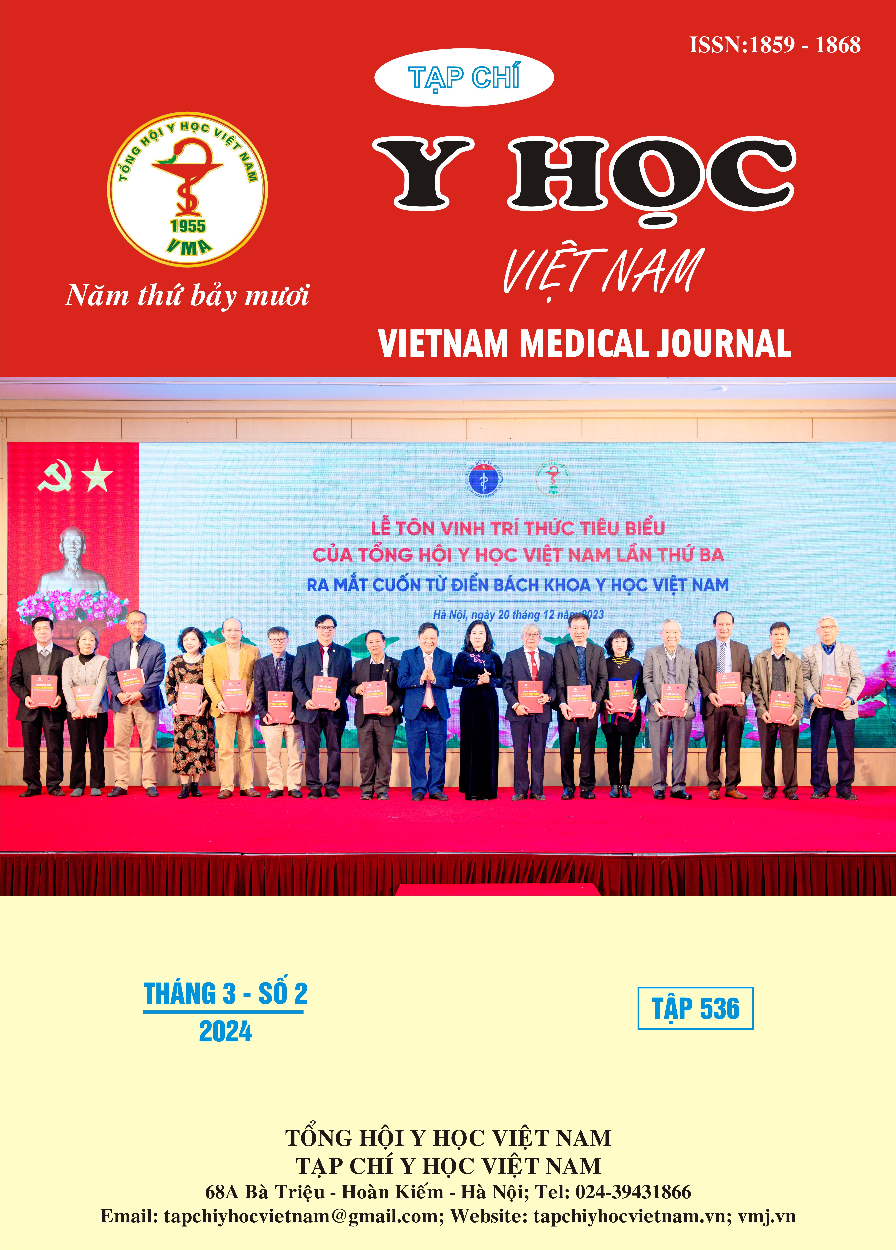KHẢO SÁT TỈ LỆ VÀ MỐI TƯƠNG QUAN GIỮA HỘI CHỨNG VỊ NHIỆT THỊNH VỚI CÁC CHỈ SỐ HÓA SINH TRÊN NGƯỜI BỆNH ĐÁI THÁO ĐƯỜNG TYPE 2
Nội dung chính của bài viết
Tóm tắt
Mục tiêu: Khảo sát tỉ lệ và mối tương quan giữa hội chứng Vị nhiệt thịnh với các chỉ số hóa sinh trên người bệnh đái tháo đường type 2 (ĐTĐ2). Đối tượng và phương pháp: Nghiên cứu cắt ngang phân tích trên 391 người bệnh được chẩn đoán ĐTĐ2 thoả tiêu chuẩn nghiên cứu từ 01/2022 – 06/2022, các đối tượng được thu thập các thông tin về các triệu chứng Y học cổ truyền (YHCT) để chẩn đoán và tìm tỉ lệ các trường hợp có hội chứng Vị nhiệt thịnh. Đồng thời các chỉ số hóa sinh liên quan như triglyceride (TG), cholesterol toàn phần (CHOL), lipoprotein cholesterol tỷ trọng cao (HDL-C), lipoprotein cholesterol tỷ trọng thấp (LDL-C), HbA1c. Nghiên cứu sử dụng hồi quy logistic để tìm mối tương quan giữa các chỉ số hóa sinh và hội chứng Vị nhiệt thịnh. Kết quả: Tỉ lệ hội chứng Vị nhiệt thịnh chiếm tỉ lệ khá cao 17,9% và mức độ tăng HbA1c có liên quan đến hội chứng Vị nhiệt thịnh với OR=1,16 (KTC 95%: 1,00-1,33), p=0,046). Kết luận: Đây là một nghiên cứu khách quan để đánh giá mối tương quan HbA1c và hội chứng Vị nhiệt thịnh từ đó hỗ trợ nâng cao chẩn đoán và điều trị trong ĐTĐ2 bằng YHCT.
Chi tiết bài viết
Tài liệu tham khảo
2. Kazerouni F, Bayani A, Asadi F, Saeidi L, Parvizi N, Mansoori Z. Type2 diabetes mellitus prediction using data mining algorithms based on the long-noncoding RNAs expression: a comparison of four data mining approaches. BMC Bioinformatics. 2020;21(1):372. Published 2020 Aug 27. doi:10.1186/s12859-020-03719-8
3. M. H. Wu and X. P. Zhou, Internal Medicine of Traditional Chinese Medicine, China traditional Chinese Medicine House, Beijing, China, 2017.
4. Ha NT, Sinh DT, Ha LTT. The Association of Family Support and Health Education with the Status of Overweight and Obesity in Patients with Type 2 Diabetes Receiving Outpatient Treatment: Evidence from a Hospital in Vietnam. Health services insights. 2021;14:11786329211014793. doi:10.1177/11786329211014793
5. Hou C, Cui Y, Xu Y, Wang Y, Hao Y. TCM Syndrome Recognition Model of Type 2 Diabetes Mellitus in Shanghai Based on TCM Inquiry Information. Evid Based Complement Alternat Med. 2022; 2022: 2843218. doi:10.1155/ 2022/ 2843218
6. Gale EA, Gillespie KM. Diabetes and gender. Diabetologia. 2001;44(1):3-15. doi:10.1007/s001250051573
7. Hsu PC, Huang YC, Chiang JY, Chang HH, Liao PY, Lo LC. The association between arterial stiffness and tongue manifestations of blood stasis in patients with type 2 diabetes. BMC Complement Altern Med. 27 2016;16(1):324. doi:10.1186/s12906-016-1308-5
8. Zhao T, Yang X, Wan R, et al. Study of TCM Syndrome Identification Modes for Patients with Type 2 Diabetes Mellitus Based on Data Mining. Evid Based Complement Alternat Med. 2021;2021:5528550. Published 2021 Sep 6. doi:10.1155/2021/5528550


